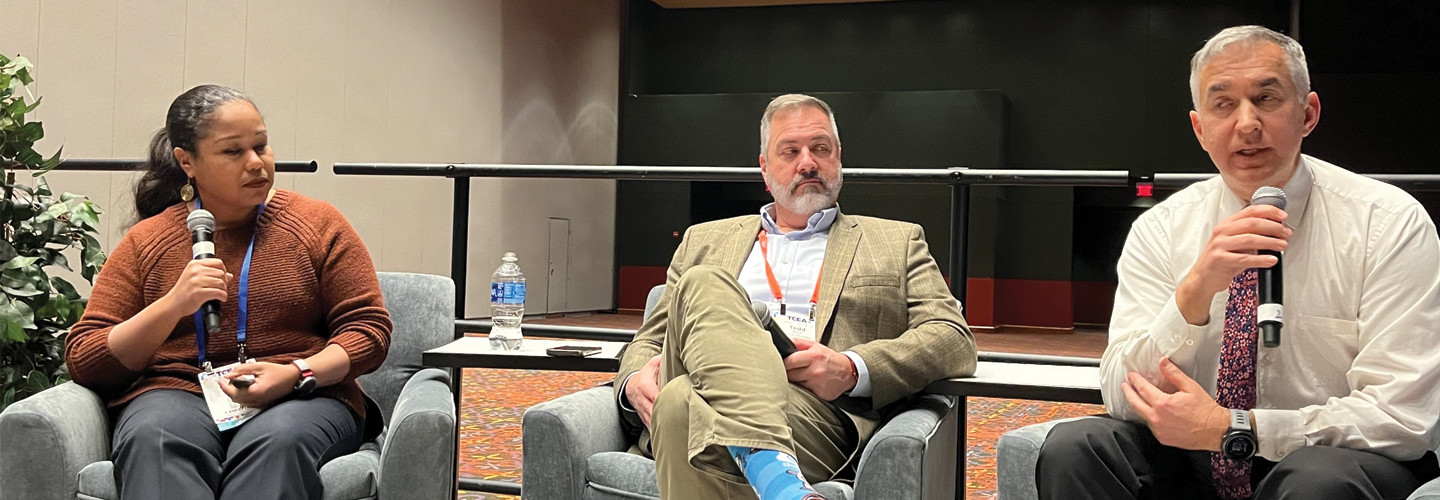“You have visitors, parents, community vendors, athletic activities, plays, concerts,” he said. “It’s a monster as far as that’s concerned. A visitor management system is crucial these days.”
Pauley explained that part of that visitor management system should also include controlling which visitors have access to the school’s internet. He advised that guest devices shouldn’t have access to the key parts of the network through Wi-Fi and that schools should ensure their networks are “very segmented and segregated.”
Pauley said another step to protecting the school’s network is to carefully vet third-party applications and regularly test the network’s vulnerabilities with penetration tests.
Most of Texas’s school districts serve 1,000 students or less, Pauley said. He understood that most IT directors may not have the staff or expertise to fully address cybersecurity concerns internally, and he pointed to resources at local education service centers and his “Cybersecurity on a Shoestring” presentation earlier during the conference.
READ MORE: Improve physical security with these trending technologies.
Prevention Starts with Practice and Early Intervention Resources
Prevention is another element of improving school safety. Krause noted that when he served as an assistant superintendent, the No. 1 issue was web filtering, which would catch and report student suicide threats, bullying and aggressive keywords.
“Web filtering was probably the most important to us,” he said. “It helped keep kids safe 24 hours a day, seven days a week.”
Krause, a big proponent of early intervention, also said social-emotional learning can “help kids regulate their behavior and learn to be resilient. If you can give students the skills to regulate their behavior when they are younger, a lot of times you can stop events happening later.”
The panelists also agreed that a solid prevention plan should include collaboration between mental health professionals and law enforcement, a crisis response plan and tabletop exercises.
A crisis response plan goes a long way in preparing schools to react when an incident occurs, including how and when to communicate with parents and the media.
This mindset also extends to cybersecurity. Pauley discussed the importance of tabletop exercises that IT professionals can use to practice step-by-step roles and responses if the network goes down, including storing crucial information offline.
He said implementing two-factor authentication and endpoint detection response could drastically improve cybersecurity in schools.
“There’s no silver bullet, but 90 percent of most attacks start with a human element,” Pauley said, adding that training everyone to avoid phishing is still a cornerstone of cybersecurity.
DIG DEEPER: Consider these tech resources for social-emotional learning.
Addressing the “Big Elephant” of Funding School Safety
The panelists noted that other technologies — such as AI-supported networked cameras, multifactor authentication, endpoint detection and response, web filtering and software that tracks trends in students’ emotional states — can all help keep schools more secure.
The panelists wrapped up the conversation by pointing to funding as the “big elephant in the room” that could stop the implementation of some of these ideas. However, they encouraged attendees to look into grants and other programs available at the state level and to also ask voters directly for funding.
“A lot of school districts are having success with passing mill levies or bond initiatives,” Krause said. “Because, who doesn’t want to keep our kids safe?”
Join EdTech as we provide written coverage of TCEA 2023. Bookmark this page and follow us on Twitter @EdTech_K12.











